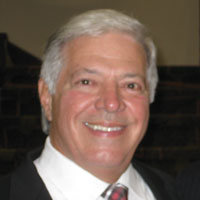
Editorial
Daylight Savings Time
By Danny Keating, Director of the Louisiana/Mississippi HVAC Insider

DST is a seasonal time change where clocks are set ahead of standard time during part of the year (in the Spring), usually by one hour. As DST starts, the Sun rises and sets later, on the clock, than the day before.
I am fairly sure we can all agree that there is some aspect of Daylight Savings Time that we find disagreeable. We probably will not agree on exactly what we do not like about DST except for the fact that we have to change our clocks and our circadian cycle twice a year. We changed back to standard time on November 1st and will switch back to daylight savings time on March 14th, 2021. Roughly we spend eight months of the year in daylight savings time and four months in standard time.
Daylight Saving Time has been used in the United States and in many European countries since World War I. In an effort to conserve fuel needed to produce electric power and support the war, countries enacted the time change. In 1916, Germany and Austria were the first countries in Europe to use DST, once again to aid in their war effort. Elsewhere, a few hundred Canadians beat the German Empire by eight years. On July 1, 1908, the residents of Port Arthur, Ontario turned their clocks forward by one hour to start the world’s first DST period. This had nothing to do with war, but rather to take advantage of the available daylight.
In the United States, after the war ended, the law proved so unpopular (people rose earlier and went to bed earlier than people do today) that it was repealed in 1919. Congress even had enough votes to override President Wilson’s veto of the law that ended DST. After that DST became a local option that was continued in a few states, such as Massachusetts and Rhode Island, and in some cities, such as New York, Philadelphia, and Chicago.
Some of you ‘Oldtimers’ will remember the 1973 oil embargo by OPEC and the long lines at the gas pumps. In an effort to conserve fuel, Congress enacted a trial period of year-round DST. This measure was hotly debated because of the concern about children leaving for school in the dark. The act was amended in October 1974 we returned to standard time for the four winter months.
Do not feel alone if you cannot make up your mind about DST. While an entire movement has been organized in support of using DST as the year-round clock, bills have also been introduced in more than 30 states to end DST completely.
Today, worldwide, DST is used in over 70 countries to make better use of daylight and to conserve energy. The beginning and end dates vary from one country to another, but DST affects over one billion people every year.
In the USA, Arizona & Hawaii are the only states that do not observe DST. Under the Uniform Time Act, a state (or even part of a state) can decide to move on or off DST. Congress has given us two options. We can either opt out of DST completely or we can switch to DST the second Sunday in March of each year.
I think I want to stay on Standard Time all year long, but I am not sure. What are your thoughts?
Editor’s Note: Although modern DST has only been used for about 100 years, ancient civilizations have engaged in comparable practices dating back thousands of years. Just one example is that the Roman water clocks used different scales for different months of the year to adjust their daily schedules to take advantage of the longer days in the summer.














